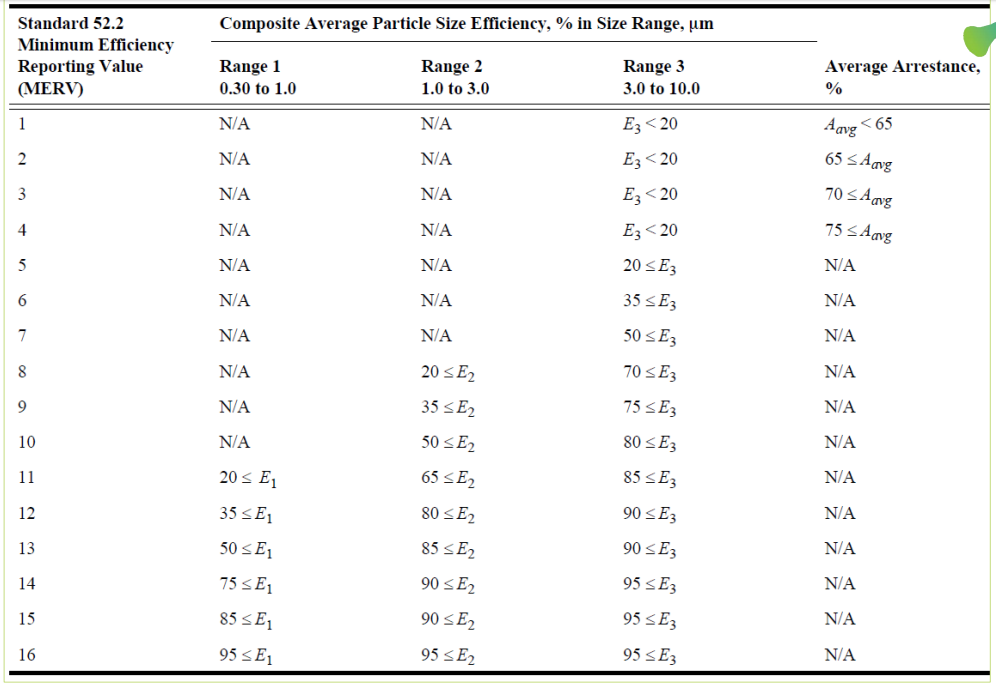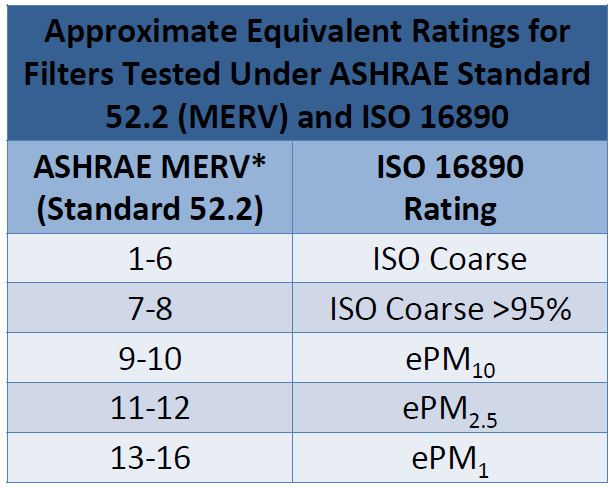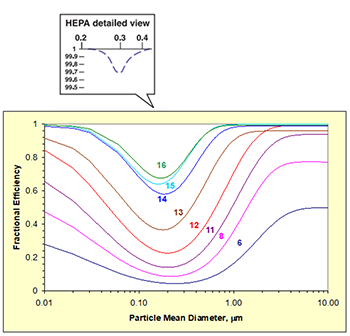Mechanical Air Filters
- Filters consist of media with porous structures of fibers or stretched membrane material to remove particles from airstreams.
- Some filters have a static electrical charge applied to the media to increase particle removal. Since the efficiency of these filters often drops off over months of initial use, a MERV-A value, if available, will reflect the actual minimum efficiency better than a standard MERV value.
- The fraction of particles removed from air passing through a filter is termed “filter efficiency” and is provided by the Minimum Efficiency Reporting Value (MERV) under standard conditions.Some filters have a static electrical charge applied to the media to increase particle removal. Since the efficiency of these filters often drops off over months of initial use, a MERV A value, if available, will reflect the actual minimum efficiency better than a standard MERV value.
- Increased filter efficiency generally results in increased pressure drop through the filter. Ensure HVAC systems can handle filter upgrades without negative impacts to pressure differentials and/or air flow rates prior to changing filters.
- Generally, particles with an aerodynamic diameter around 0.3 μm are most penetrating; efficiency increases above and below this particle size.
- Overall effectiveness of reducing particle concentrations depends on several factors:
- Filter efficiency
- Airflow rate through the filter
- Size of the particles
- Location of the filter in the HVAC system or room air cleaner
For more information, see the ASHRAE Position Document on Filtration and Air Cleaning.

ASHRAE Standard 52.2-2017 Minimum Efficiency Reporting Value (MERV)
SHRAE MERV vs. ISO 16890 Ratings

HEPA Filters
- By definition, true HEPA filters are at least 99.97% efficient at filtering 0.3 μm mass median diameter (MMD) particles in standard tests.
- Most penetrating particle size may be smaller than 0.3 μm, so filtration efficiency of most penetrating particles can be slightly lower.

- HEPA filter efficiency is better than MERV 16.
- HEPA filters may not be an appropriate option for some into HVAC systems due to high pressure drops and the likelihood that systems will need new filter racks to allow sufficient sealing to prevent filter bypass.
- To function properly, HEPA filters must be sealed properly in filter racks.
- Filters are often delicate and require careful handling to prevent damage and preserve performance.
- HEPA filters can be located in HVAC systems or in:
- In-Room or Portable HEPA Machines
- Pre-Assembled Systems
- Ad Hoc Assemblies
Electronic Air Filters
- Include a wide variety of electrically-connected air-cleaning devices designed to remove particles from airstreams.
- Removal typically occurs by electrically charging particles using corona wires or by generating ions (e.g., pin ionizers), and:The fraction of particles removed from air by an electronic filter is termed “removal efficiency.”
- Collecting particles on oppositely charged plates (precipitators, ESP),or
- Charged particles’ enhanced removal by a mechanical air filter, or
- Charged particles’ deposition on room surfaces.
- Overall effectiveness of reducing particle concentrations depends on:It is critical to wipe the wires in electrostatic precipitators as silicone buildup reduces efficiency.
- Removal efficiency
- Airflow rate through the filter
- Size and number of particles
- Location of the filter in the HVAC system
- Maintenance and cleanliness of electronic filter components
- Always follow manufacturer’s instructions when using electronic air filters.
For more information, see the ASHRAE Position Document on Filtration and Air Cleaning.
Gas-Phase Air Cleaners
- Gas-phase air cleaners are those used to remove ozone, volatile organic compounds and odors from the air.
- Most contain sorbent materials such as carbon (e.g., activated charcoal).
- While there may be exceptions, most sorbent beds alone are not generally efficient at removing viruses from airstreams.
- Carbon/sorbent impregnated fiber filters will remove particles; check for a MERV rating to show efficiency just as you do with standard particulate filters.
Holtop air filtration products for anti-virus:
1. Energy recovery ventilator with HEPA filter
2. UVC + photocatalysis filter air disinfection box
3. New technology air disinfection type air purifier with up to 99.9% disinfection rate
4.Customized air disinfection solutions
Post time: Nov-11-2020








